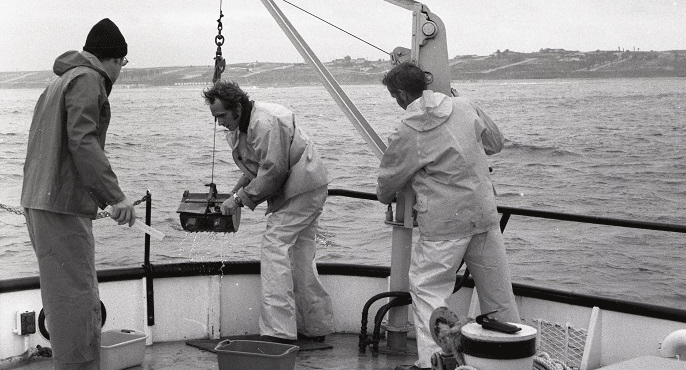One of SCCWRP’s top six accomplishments of its first 50 years
SCCWRP has brought standardization and quantitative rigor to how the ecological impacts of sediment contamination are assessed across coastal California.
SCCWRP’s top six accomplishments
The six most important, managerially relevant accomplishments of SCCWRP’s first 50 years, as identified by those who’ve helped make SCCWRP the organization it is today
Technical accomplishments
Organizational accomplishments
Sediment quality assessments are an essential management strategy for understanding the ecological effects of chemical contamination in seafloor sediment, which is where most contaminants accumulate. Although multiple methods and tools have been used over the decades to assess sediment quality, their reliability and effectiveness have historically been limited, creating uncertainty and disagreements over how to interpret findings.
SCCWRP is a pioneering leader in standardizing and bringing quantitative rigor to how California environmental managers conduct sediment quality assessments. Throughout the organization’s 50-year history, SCCWRP has focused on developing robust field sampling methods, vetting and refining methods for conducting sediment chemistry and toxicity testing, and designing biology-based scoring tools to quantify sediment contamination’s impacts on benthic macrofauna. SCCWRP also has led numerous intercalibration exercises with Southern California’s environmental management community to improve quality and consistency of analysis methods.

SCCWRP’s advancements in sediment quality science have been adopted at the local, regional, state, and national levels. The most high-profile example is the California State Water Resources Control Board’s decision to adopt a pair of SCCWRP developed sediment quality assessment frameworks that define for environmental managers how to assess compliance with California’s Sediment Quality Objectives (SQOs). The first SQO framework, adopted in 2008, focuses on protecting the animals that live in and on sediment. The second framework, adopted in 2008, focuses on protecting humans from sediment contamination that bioaccumulates through food webs. California is the only state to have defined a consistent, unified approach for setting these SQO regulatory targets for enclosed bays and estuaries statewide.
In addition to moving sediment science forward, SCCWRP has facilitated the transfer of these methods and tools to the management community and offered its expertise on multiple state and national science advisory panels. As a result, managers have been able to largely move past discussion and debate about how to interpret sediment quality assessment data, and instead can focus on containing and remediating the ecosystem impacts of sediment contamination.
